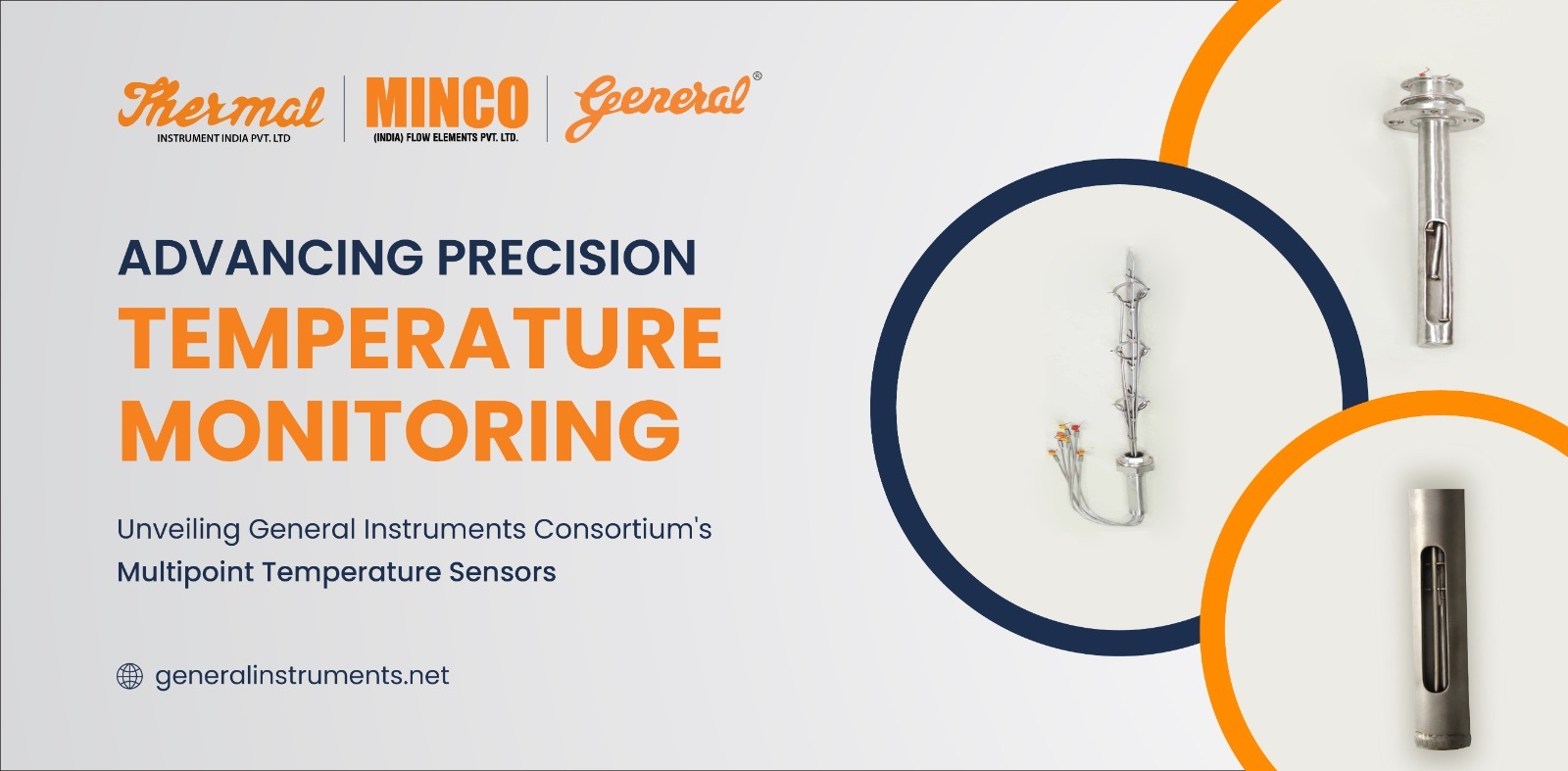
Advancing Precision Temperature Monitoring: Unveiling General Instruments Consortium’s Multipoint Temperature Sensors
Introduction:
Temperature monitoring lies at the heart of industrial processes, ensuring efficiency, safety, and product quality. In the pursuit of accurate measurements in complex environments such as reactors and furnaces, the General Instruments Consortium introduces their Multipoint Temperature Sensors. In this blog, we delve into the versatile features and benefits of these sensors, exploring their flexible designs, robust protection tubes, and their pivotal role in refining temperature control.
Enhancing Precision with Multipoint Temperature Sensors:
In the realm of temperature monitoring, precision is paramount. General Instruments Consortium’s Multipoint Temperature Sensors offer a breakthrough approach. These sensors are engineered to measure temperature at different points along their length, bringing a new level of accuracy to industries such as Catalytic Crackers, Pressurized Reactors, and Distillation Columns.
Flexible Designs and Robust Protection:
The key to General Instruments Consortium’s Multipoint Temperature Sensors lies in their adaptability. There are two distinct designs catering to diverse needs:
Flexible, Bendable Free-Hanging Styles:
These sensors combine flexibility and versatility. Whether coiled for easy shipping or incorporating contact leaf springs, bimetal springs, or guiding tubes, these designs ensure accurate measurements and individual sensor replacement during operations.
Rigid Protection Tube Design:
For demanding conditions, the rigid design excels. Through welded heat transfer blocks, this design establishes impeccable thermal conductive contact with the inner wall of the protection tube or thermowell. It’s a solution tailored for extreme environments.
Applications and Versatility:
The applications of these sensors span a wide range, from chemical reactors and distillation columns to storage tanks. They’re equipped to profile temperatures and detect hot spots, ensuring the highest level of process control.
Key Features and Customization:
General Instruments Consortium’s Multipoint Temperature Sensors boast a variety of features:
- Multiple Measuring Points: Accurate temperature profiling with multiple measuring points.
- Sensor Variety: Compatibility with Thermocouples or RTD Pt100 sensors.
- Durability: Constructed with materials like stainless steel, Hastelloy, and Inconel.
- Safety Assurance: Explosion-proof designs with certifications like ATEX EEx d Flameproof and EEx i Intrinsically safety.
- Exemplifying Excellence: General Instruments Consortium’s Designs:
Standout designs from GIC
Let’s explore three standout designs that showcase General Instruments Consortium’s prowess:
- MULTIPOINT ASSEMBLY WITH SPACER (Model: GIC-ML-SPC): Direct medium contact with open or perforated thermowell, ensuring optimal thermal conductivity.
- MULTIPOINT ASSEMBLY WITH HEAT TRANSFER BLOCK (Model: GIC-ML-HT BLK): Individually replaceable spring-loaded elements for ease of maintenance and reliability.
- MULTIPOINT ASSEMBLY WITH GUIDING TUBE (Model: GIC-ML-GDT): A design incorporating guiding tubes for precise measurements.
Conclusion:
In the dynamic landscape of industrial processes, temperature control is not a mere necessity – it’s a science. General Instruments Consortium’s Multipoint Temperature Sensors bring this science to life, offering adaptability, accuracy, and safety. Whether through flexible designs or robust protection tubes, these sensors redefine precision in temperature monitoring. From chemical reactors to storage tanks, they stand as sentinels of efficiency, ensuring optimal process control. It’s a testament to innovation that empowers industries to elevate their standards and redefine excellence in temperature management.
